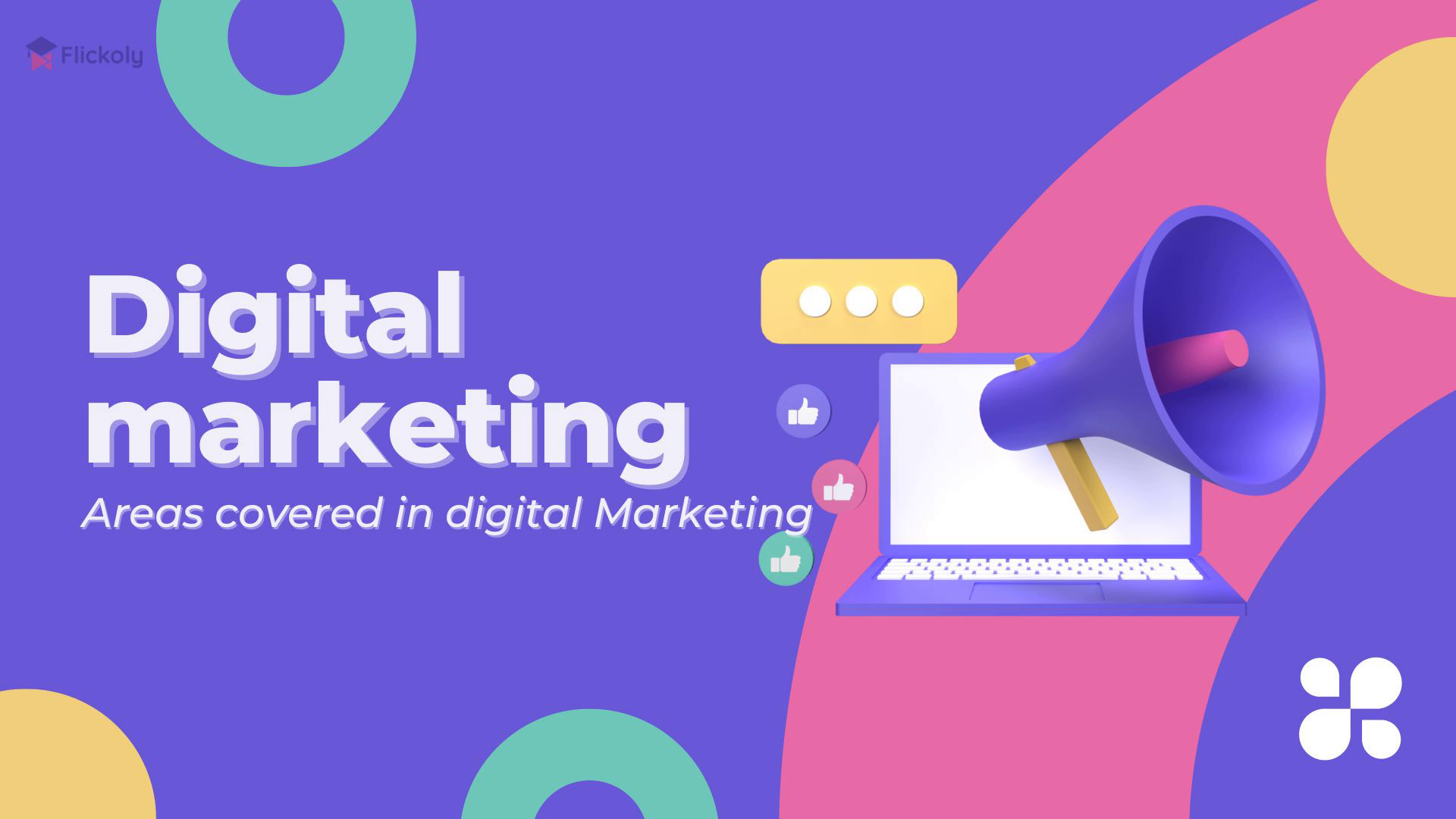
Areas of Digital marketing
Scene 1 (0s)
Digital Digital marketing marketing Areas covered in digital Marketing Areas covered in digital Marketing.
Scene 2 (7s)
What will we talk about? Digital Marketing Fundamentals Search Engine Optimization (SEO) Search Engine Marketing (SEM) Social Media Marketing (SMM) Email Marketing Content Marketing Video Marketing Affiliate Marketing Mobile Marketing Online PR and Brand Reputation Management Web Analytics and Data-driven Marketing E-commerce Marketing Emerging Trends in Digital Marketing.
Scene 3 (19s)
Digital Marketing Fundamentals Embark on an enlightening exploration of digital marketing's core principles, evolution, and its crucial role in modern business strategies. Unleash the potential for success in this dynamic and transformative landscape..
Scene 4 (30s)
Search Engine Optimization (SEO) Increased Organic Traffic Better User Experience Long-Term Results Enhanced Brand Visibility and Credibility Cost-Effectiveness.
Scene 5 (39s)
Search Engine Marketing (SEM) Increased Website Traffic Immediate Results Cost Control Precise Targeting Measurable and Data-Driven.
Scene 6 (46s)
Search Engine Optimization (SEO) Increased Organic Traffic Better User Experience Long-Term Results Enhanced Brand Visibility and Credibility Cost-Effectiveness.
Scene 7 (54s)
Social Media Marketing (SMM) Increased Brand Awareness Real-Time Interaction Targeted Advertising Cost-Effective Promotion Performance Tracking.
Scene 8 (1m 2s)
Email Marketing: Increased Reach: Email Marketing enables you to reach a large and targeted audience directly in their inbox, increasing the chances of your message being seen. Personalization: You can personalize email content based on recipient preferences, demographics, and behavior, fostering a more meaningful and engaging connection with the audience. Conversion and Sales: Email campaigns can drive conversions and sales by promoting products, offering exclusive deals, and providing compelling call-to-action buttons. Cost-Effective: Email Marketing is a cost-effective method, requiring minimal expenses compared to traditional marketing channels, making it ideal for businesses with budget constraints. Performance Metrics: Email Marketing platforms offer detailed performance metrics like open rates, click-through rates, and conversion rates, allowing you to measure campaign effectiveness and optimize future efforts..
Scene 9 (1m 34s)
Affiliate Marketing Mobile Marketing Content Marketing Video Marketing Using engaging video content to promote products/services, boost brand awareness, and drive audience engagement across platforms like social media and video-sharing sites. A performance-based strategy where affiliates earn commissions for driving traffic/sales to a business using their unique tracking links or promo codes. Reaching and engaging audiences on mobile devices through SMS marketing, in-app ads, and mobile-friendly approaches for increased customer engagement and conversions..
Scene 10 (1m 54s)
Engaging with Customers: Actively engaging with customers on social media and other online platforms, responding to inquiries, feedback, and reviews to show transparency and build trust. Influencer Relationships: Cultivating positive relationships with influencers and brand advocates to leverage their reach and credibility in promoting the brand positively. Content Strategy: Implementing a content strategy that showcases the brand's values, achievements, and contributions to build a strong and positive brand narrative, enhancing its reputation in the digital space. Online PR and Brand Reputation Management Online Reputation Monitoring: Constantly monitoring online mentions, reviews, and comments related to the brand to proactively address any negative feedback and maintain a positive brand image. Crisis Management: Developing a well-defined crisis management plan to handle negative situations or controversies swiftly and effectively, minimizing potential damage to the brand reputation..
Scene 11 (2m 27s)
Web Analytics and Data- driven Marketing Data Collection: Implementing tools and techniques to gather relevant data from website Data Collection: Implementing tools and techniques to gather relevant data from website interactions, user behavior, and marketing campaigns. interactions, user behavior, and marketing campaigns. Data Analysis: Analyzing the collected data to gain insights into user preferences, behavior, Data Analysis: Analyzing the collected data to gain insights into user preferences, behavior, and trends, enabling data-driven decision-making. and trends, enabling data-driven decision-making. Performance Measurement: Evaluating the effectiveness of marketing efforts, website Performance Measurement: Evaluating the effectiveness of marketing efforts, website performance, and user engagement using key performance indicators (KPIs) and metrics. performance, and user engagement using key performance indicators (KPIs) and metrics. A/B Testing: Conduct experiments (A/B testing) to compare different marketing strategies, A/B Testing: Conduct experiments (A/B testing) to compare different marketing strategies, website elements, or content variations to determine the most effective approach. website elements, or content variations to determine the most effective approach. Optimization Strategies: Using data insights to optimize marketing campaigns, website design, and user Optimization Strategies: Using data insights to optimize marketing campaigns, website design, and user experience, continuously improving performance based on data-driven findings. experience, continuously improving performance based on data-driven findings..
Scene 12 (3m 23s)
E-commerce Marketing: Product Presentation: Strategically showcasing products with high-quality images, detailed descriptions, and user reviews to entice potential customers and drive conversions. Shopping Experience: Ensuring a seamless and user-friendly shopping experience with easy navigation, intuitive design, and a secure checkout process to minimize cart abandonment. Personalization: Implementing personalized product recommendations and targeted marketing messages based on customer preferences and past purchase behavior. Promotions and Offers: Running enticing promotions, discounts, and loyalty programs to attract new customers and encourage repeat purchases. Customer Support: Providing excellent customer support through various channels like live chat, email, or phone, resolving queries promptly and enhancing customer satisfaction and loyalty..
Scene 13 (3m 51s)
See You in Next Session! Flickoly.
Scene 14 (3m 57s)
Thank you! www.flickoly.com care@flickoly.com Wishing you all great success and a bright future in Digital Marketing Course. Keep growing, keep achieving, and keep making a positive impact! CONTACT US Your Instructor Avinash Chandra.